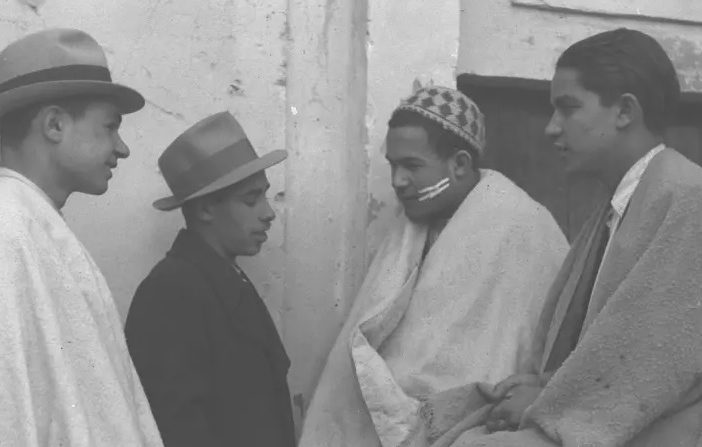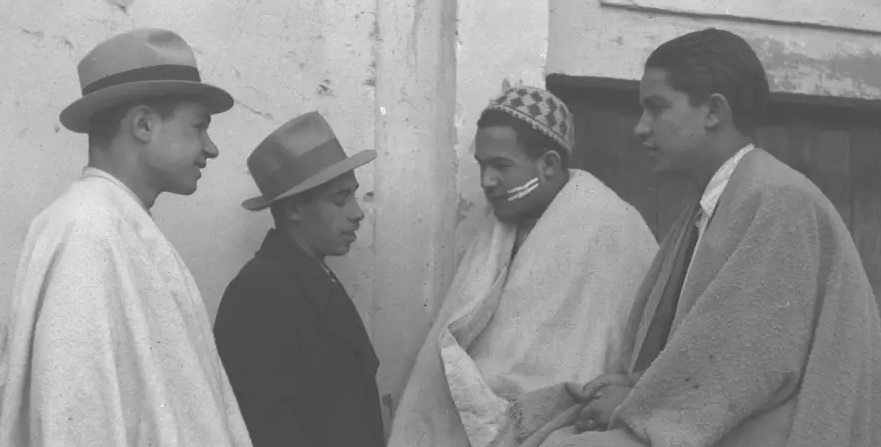The Jerusalem Post
By Ilanit Chernick
There are about one million Israeli Jews who are Moroccan or of Moroccan descent.
the story of Moroccan Jewry’s immigration to Israel is not simple, beginning many years before the State of Israel was established.
To mark their difficult journey home, as well as the major contributions Moroccan Jewry has made to Israeli society, the World Federation of Moroccan Jewry has organized dozens of events in the forthcoming months for the approximately one million Israeli Jews who are Moroccan or of Moroccan descent.
Toward the end of the rule of the Ottoman Empire, and prior to the signing of the Fez Treaty in 1912 that entailed French protection of Moroccan Jews, there was a mass immigration of Jews from large cities – including Fez, Rabat and Marrakech – to the smaller towns and villages surrounding the cities.
However, the decline in the financial circumstances, overcrowding, and the need to pray in secret to avoid persecution by locals caused some young families to immigrate to Israel. Between 1908 and 1918, some 80 families moved to Tiberius and Jerusalem.
In the years prior to the Holocaust, Moroccan Jews were encouraged to enroll their children in French schools. The community was also prompted to receive a French education and integrate into French culture, as French influence in Morocco began to grow in the early part of the 20th century.
But as the Vichy regime came to power in 1940 and the Holocaust began, the situation for Moroccan Jewry began to change.
Although King Mohammed V is credited with blocking efforts by Vichy officials to impose anti-Jewish legislation upon Morocco and deport the country’s 250,000 Jews to their deaths in Nazi concentration camps in Europe, partial Nazi race measures were put in place in Morocco despite Mohammed’s objection.
Vichy officials also forced Mohammed to sign two decrees, which barred Jews from entering certain schools or obtaining certain positions.
Following the end of World War II and the establishment of the State of Israel, Moroccan Jews were encouraged to move to Israel by Zionist groups and organizations.
With French rule remaining over Morocco, Jews were allowed to immigrate legally, and many young Moroccan Jews left to help fight during the War of Independence. Others left as they also felt mistreated by the French government.
With the establishment of the State and the country’s victory over several Arab nations, antisemitism skyrocketed. The Moroccan Nationalist Movement incited hatred against the Jews, and on June 7, 1948, 44 Jews were massacred in pogroms across the country.
This encouraged further immigration to Israel – in the five years following Israel’s independence, around 30,000 Jews made aliyah, and the numbers increased in subsequent years.
By 1954, when it became clear that France was advancing its plan to grant Morocco independence and pogroms and sporadic attacks against Jews started to increase, there was a massive wave of immigration to Israel.
As their situation deteriorated, more and more Jews began to leave. Following Morocco’s independence in 1956 and its joining the Arab League in 1958, immigration to Israel and Zionism were banned.
Although Jews had full rights as citizens following Morocco’s independence, they were still treated with disdain and subjected to antisemitism.
Viewed as one of the most tragic incidents to have happened to Moroccan Jews trying to escape persecution is that of the Egoz, which was a ship smuggling 43 Jewish Moroccans as well as an Israeli representative, Chaim Tzarfati. During the night between January 10 and 11, it sank.
Between 1948 and 1955 around 70,000 Jews left Morocco, and another 60,000 Jews left Morocco from 1955 to 1961.
WITH THE ascension of Hassan II to the throne in 1961, an agreement was made that he would accept a large per-capita bounty from the international Jewish community for each Jew who emigrated from Morocco, and under this agreement Jews were allowed the freedom to leave. By the eve of the Six Day War, some 120,000 emigrated during this six-year period alone.
According to the World Federation of Moroccan Jewry, over 300,000 Moroccan Jews have immigrated to Israel since the 1960s.
“Today, before the Federation’s figures, more than one million immigrants [and their descendants] from Morocco live in Israel, making them the second-largest community after immigration from the Commonwealth,” it explained. “On Sunday, there will be a second salute on the eve marking the first series of events, which commemorates the 60th anniversary of the mass immigration from Morocco.”
The event, the Federation explained, will be attended by Hadera Mayor Zvika Gendelman and Moroccan Jewish Federation president Sam Ben-Shitrit.
Additional events will take place in the coming months in Petah Tikva, Beit Shemesh, Herzliya, Dimona, Ramle and in the Jerusalem municipality.
As part of the events of the salute to Moroccan Jewry, the city of Ramle will inaugurate a memorial site commemorating the 43 Jewish victims of the Egoz ship disaster on November 25. During the events, some of the achievements of Moroccan Jewry and its contribution to the building and settlement of the country will be presented.
Ben-Shitrit explained that the Federation’s figures indicate that Moroccan Jewry established 111 settlements and agricultural settlements throughout the country.
“In the North, these settlements constituted as human protective walls from attacks by terrorists from Lebanon and Syria and in the South, from the penetration of terrorists from the Sinai and Egypt,” he said. “The Arab salute is also for those Moroccan immigrants who stuck their nails into the Galilee and Negev sands and did not move.”
Ben-Shitrit stressed that many of the areas that Moroccan Jews made their homes later became major cities.
“‘Khalsa’ became Kiryat Shmona, ‘Kastina’ became Kiryat Malachi and Beit Mazmil became the Kiryat Hayovel and Kiryat Menahem neighborhoods Jerusalem.
The Federation, with the support of local authorities, will invest NIS 3 million with the aim of highlighting the achievements of Moroccan Jewry in various areas.
“Moroccan Jewry can take pride in its wide representation in the Knesset and in the government, in the legal and communications world – more than any of the other communities in Israel,” Ben-Shitrit continued. “We ask everyone to salute and celebrate the 60th anniversary of the mass immigration of Moroccan Jewry, and 20 years of Federation activities.”
Join Jerusalem Post Premium Plus now for just $5 and upgrade your experience with an ads-free website and exclusive content. Click here>>








